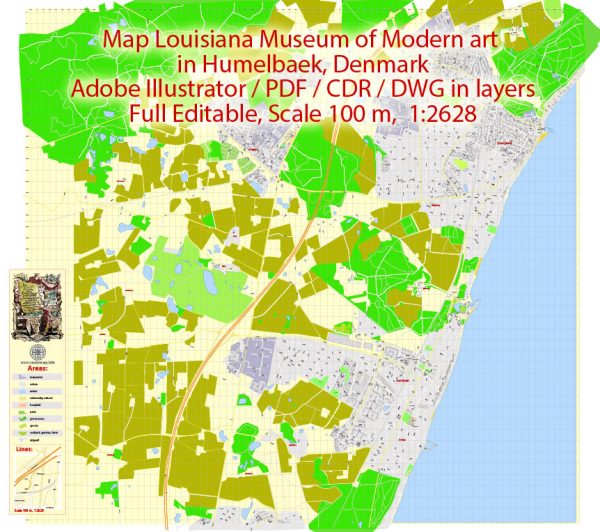Humlebæk is a town located in the Fredensborg Municipality in the Capital Region of Denmark. It has a rich history that reflects the broader trends in Danish urban development. While not a large urban center, Humlebæk has evolved over the centuries, influenced by factors such as agriculture, trade, and transportation.
- Early History: Like many European towns, Humlebæk has ancient roots. The area was likely settled in prehistoric times, and archaeological evidence suggests human activity dating back to the Iron Age. Over the centuries, the region was part of various historical events, including Viking activities.
- Agricultural Roots: Much of Denmark’s history is closely tied to agriculture, and Humlebæk is no exception. The town likely developed around farms and agricultural activities, with its residents engaged in farming, animal husbandry, and other rural pursuits.
- Medieval Period: Denmark has a rich medieval history, and during this period, Humlebæk would have been influenced by the feudal system and the presence of local lords or landowners. The town might have had a church, a focal point for both religious and community activities.
- Trade and Fishing: Given its proximity to the coast, Humlebæk likely engaged in fishing and maritime trade. The Øresund, the strait between Denmark and Sweden, has historically been an important waterway for trade, and towns along its shores benefited from their maritime connections.
- Transportation Developments: The development of transportation infrastructure, including roads and later railways, played a crucial role in the evolution of towns. Humlebæk would have experienced changes in its landscape and economic activities as transportation networks improved.
- Cultural and Social Changes: The cultural and social aspects of urban development are also significant. Humlebæk, like many Danish towns, would have seen changes in social structures, cultural practices, and community life over the years.
- Modern Era: In more recent times, especially in the 19th and 20th centuries, Humlebæk, like many Danish towns, underwent modernization. Industrialization, urbanization, and changes in agricultural practices influenced the town’s economy and demographics.
- Cultural Institutions: Today, Humlebæk is known for the Louisiana Museum of Modern Art, which was established in 1958. The museum has played a significant role in the cultural life of the town and has drawn national and international attention.
In summary, Humlebæk’s history is intertwined with broader Danish historical trends, encompassing agriculture, trade, transportation, and cultural developments. The town’s evolution reflects the dynamic nature of urban development in Denmark over the centuries.


 Author: Kirill Shrayber, Ph.D.
Author: Kirill Shrayber, Ph.D.